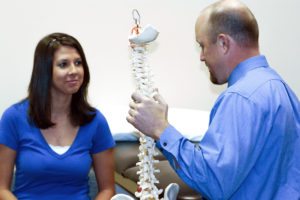What is the McKenzie Method?
Also know as Mechanical Diagnosis and Therapy, the McKenzie Method is a philosophy of active patient involvement and education that is trusted and used by practitioners and patients all over the world for back, neck and extremity problems. This approach continues to be the most researched physical therapy based method available. The key distinction is its initial assessment component – a safe and reliable means to accurately reach a diagnosis and only then make the appropriate treatment plan. Rarely is time or money wasted to perform expensive tests, Certified McKenzie clinicians have a valid indicator to know right away whether – and how – the method will work for each patient.
Take our quick 2-minute assessment to see if McKenzie Method could help your specific pain pattern.
Assessment
Unique to the McKenzie Method, the process begins with a thorough history and testing of movements to identify distinct patterns of pain responses that are: reproducible, objective, reliable, and reflect the characteristics of the underlying pain generator.
 The most common and meaningful pattern of pain response is Centralization, which is well documented now in literature as both a diagnostic tool and a prognostic indicator. This is defined as a patient’s referred or radiating pain (whether just slightly off the center, into the buttock, or all the way to the toes) promptly reversing, returning to the center of the back, and then usually also abolishing.
The most common and meaningful pattern of pain response is Centralization, which is well documented now in literature as both a diagnostic tool and a prognostic indicator. This is defined as a patient’s referred or radiating pain (whether just slightly off the center, into the buttock, or all the way to the toes) promptly reversing, returning to the center of the back, and then usually also abolishing.
Whether the patient’s pain is acute or chronic, if Centralization occurs through this logical step-by-step assessment process, good outcomes are favorable, It provides a benefit to the patient and practitioner by eliminating the need for expensive and/or invasive procedures.
Ultimately, it provides a rational guide to the most optimal treatment strategy for a specific patient.
Nikolai Bogduk MD, PhD, DSc from his Foreword in McKenzie’s text The Lumbar Spine: (1) “Its reliability is now beyond doubt. Whereas research has shown that other methods of assessment lack reliability, McKenzie assessment has moved from strength to strength. Its reliability, however, is contingent upon training. While anyone can assess according to the system, it cannot be mastered by hearsay or assumption.”
Want to know if your pain shows signs of centralization?
Our assessment tool can help identify if you’re a good candidate for this approach.
The Right Road to Restore Function
Assessment is the first step! Pain is a symptom – not a diagnosis. To successfully treat, one must first effectively evaluate.
 While every patient can benefit from the McKenzie Method® of mechanical assessment, not all patients will be suitable for mechanical therapy – and this is determined quickly so that alternative treatments can begin as soon as possible.
While every patient can benefit from the McKenzie Method® of mechanical assessment, not all patients will be suitable for mechanical therapy – and this is determined quickly so that alternative treatments can begin as soon as possible.
In fact, research has shown that the initial McKenzie assessment procedures performed by competent (credentialed) MDT clinicians are as reliable as costly diagnostic imaging (i.e., x-rays, MRIs) to determine the source of the problem and quickly identify those who will or will not respond to the treatment principles of MDT using the Centralization phenomenon as a guide.(2)
MDT credits the patient’s ability to learn the principles and be in control of their own symptom management, reducing their dependency on medical intervention and gaining life-long pain management and preventive skills.
The Right Road to Restore Function
The McKenzie Method® addresses a growing demand from patients and third-party payers from professional rehabilitation services that educate the patient and develop the patient’s self-treatment skill in a cost effective and time-efficient manner.
It also promotes the body’s potential to heal itself without medication, heat, cold, ultrasound, needles, surgery or physical dependency on the practitioner.(3)
References
(1) Foreword by Nikolai Bogduk MD, PhD, DSc The Lumbar Spine; Mechanical Diagnosis & Therapy, second edition; published March 2003, written by Robin McKenzie and Stephen May
(2) Donelson et al. Spine May 15;22(10):1115-22, 1997
(3) The McKenzie Method® – Literature Relevant to the McKenzie Method
Ready to See if McKenzie Method is Right for You?
Don’t wait for your pain to get worse. Our evidence-based assessment takes just 2 minutes and can provide valuable insights into whether your pain pattern responds well to McKenzie Method treatment.
Ready to See if McKenzie Method is Right for You?
Don’t wait for your pain to get worse. Our evidence-based assessment takes just 2 minutes and can provide valuable insights into whether your pain pattern responds well to McKenzie Method treatment.
